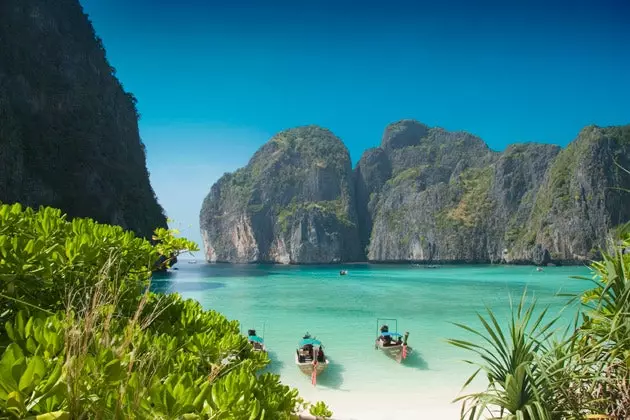
So it should be...
It's official. The highest-grossing film in the history of Chinese cinema is a low-budget comedy, which translates something like Lost in Thailand, and since its premiere on October 12, it has grossed more than 135 million euros. The film chronicles the misadventures of two Chinese executives who set out to find their boss in northern Thailand. The first to find him will take over the power of the company and, throughout this desperate race, the protagonists get into a thousand troubles and adventures in the Asian country.
The film has been seen by more than 30 million Chinese, and has caused a furor in the Asian giant for repeating the film's journey, causing a 10% increase in Chinese tourist arrivals since its premiere and making Thailand the number 1 recipient of tourists from China . Chinese social media has helped fuel the fashion effect with users sharing vacation photos and stories and giving feedback on the trend.
But it's not the first time something like this has happened...
**1) THE BEACH, MAYA BAY (THAILAND) **
The paradisiacal bay of Maya was known among divers and seekers of idyllic beaches as the crown jewel of the Phi Phi Islands in Thailand , but it was after the film The Beach, which Leonardo Di Caprio and Tilda Swinton starred in in 2000, that travelers who had never even heard of the islands began to arrive. The story of a group of young people creating their own paradise on the fringes of society in a remote corner of Thailand captivated audiences and has inspired many travellers.
But Fox, who bought the rights to the original book from Alex Garland, thought Maya didn't fit Hollywood standards, and she decided that she had plenty of vegetation and lacked palm trees , unleashing criticism from environmental organizations for the irreparable damage to the island's fragile ecosystem. Nowadays, it is difficult to recognize paradise among the hundreds of tourists who arrive in overflowing boats every morning during high season. The only chance to see what it was like is to stay on Phi Phi and approach Maya at dusk , when the hordes of tourists have gone back to their hotels in Krabi or Phuket.
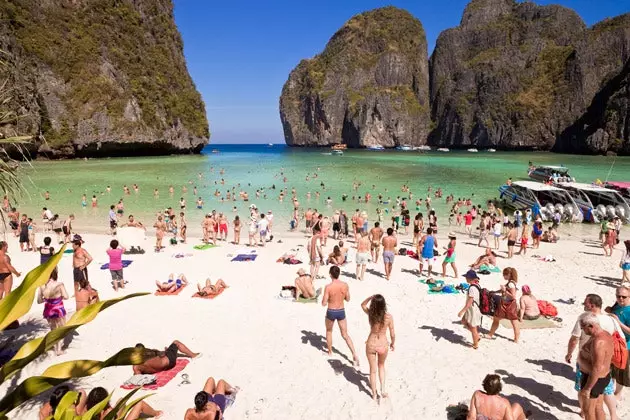
And so it is... Maya Bay
2) EAT, PRAY, LOVE: BALI
In 2010, Elizabeth Gilbert's bestseller, starring Julia Roberts and Javier Bardem, brought Bali back into fashion. A new spiritual tourism, made up mainly of women between 29 and 50 years old, managed get the Indonesian island out of the tourist crisis in which it found itself after the 2002 attacks . The film narrates the journey of the American journalist through Italy, India and Bali to rediscover herself and solve her existential crisis after the failure of her marriage.
In Bali, Gilbert finds the peace she was looking for thanks to the help of healer and spiritual guru Ketut Liyer, a 92-year-old Balinese man who lives in the small town of Penestanan. The famous Balinese massage treatments and the magic of the landscape of rice fields from the interior of the island do the rest. Here she also ends up finding love, in the person of a Brazilian played by Javier Bardem.
Shortly after the film was released, most hotels in Ubud reinforced their offer of meditation, yoga and massages to meet the growing demand. The healer Ketut, who still lives in Ubud, has since seen tourists from all over the world arrive, book in hand, set out to literally follow in Gilbert's footsteps, perhaps in the vain hope of eventually meeting Gilbert. his particular Bardem. Even Lonely Planet jumped on the promotion bandwagon with specially crafted content in the wake of the film.
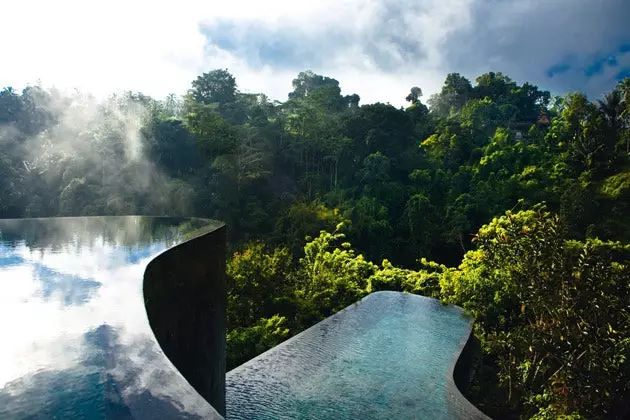
Ubud Hanging Gardens, Bali
3)127 HOURS, UTAH
James Franco gave life to the American climber Aron Raston who amputated his arm to free himself after becoming trapped under a rock in Robbers Roost, Utah, for more than 5 days in 2003. The scenes prior to the tragic moment in which Franco pedals through the Canyonlands National Park with the music at full volume and the reddish hue of the rocks flooding the screen alone are enough to make you want to drop everything and set out to discover the wild beauty of Utah. The state tourism authorities created an itinerary inspired by the film, which included the main scenes of the film. Minus the drama, of course.
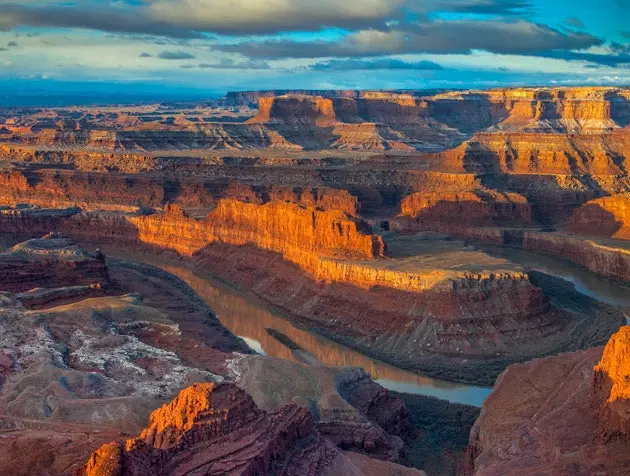
Canyonlands National Park
4) MEMORIES OF AFRICA, KENYA
“He had a farm in Africa” Meryl Streep's voice-over begins as Africa sneaks onto the screen (and into the heart) of the viewer. Sydney Pollack's film was based, among others, on the book of the same name by Danish writer Karen Blixen, and more or less faithfully narrates her life in Kenya when it was still a British colony. Meryl Streep and Robert Redford managed to bring to life one of the most romantic love stories on celluloid, which, seasoned with fascinating African landscapes, unleashed in 1985 the fever for trips and safaris to the African continent. The scene of Redford washing Meryl Streep's hair while the soapy water slides on the floor has a place among the most sensual on the big screen, and the careful aesthetics of the film made luxury safaris fashionable in Africa, a trend that continues among high-end trips.
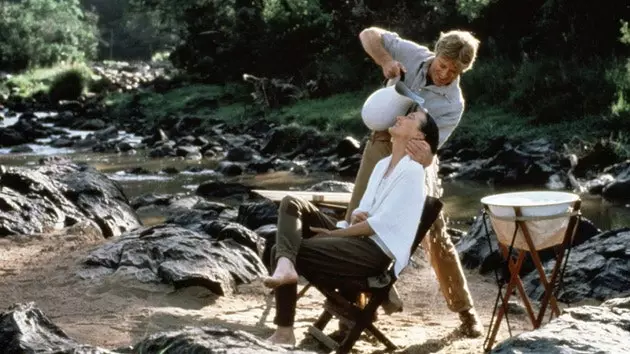
Out of Africa made luxury safaris fashionable in Kenya
5) KARATE KID, BEIJING
Yes, karate is a Japanese martial art and Karate Kid is a family movie, but the shooting of this sequel in Beijing has been a good promotional campaign for the Asian giant . The scenes of Jayden Smith (Will's son) training on the Chinese wall , visiting the Forbidden City or strolling through the hutongs (almost non-existent now) of Beijing feed the desire to head towards one of the most enigmatic and fascinating countries in Asia.
*You may also be interested...
- 100 movies that make you want to travel
- All information about cinema
- All articles by Carmen Gómez Menor - Thailand and the cinema: a love story with a happy ending
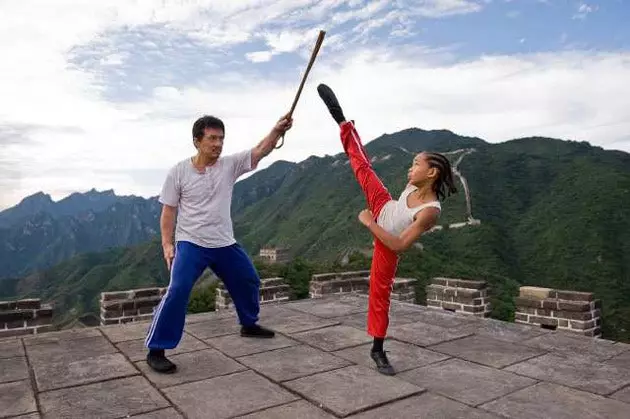
Karate kid: Japanese martial arts on the Great Wall of China
